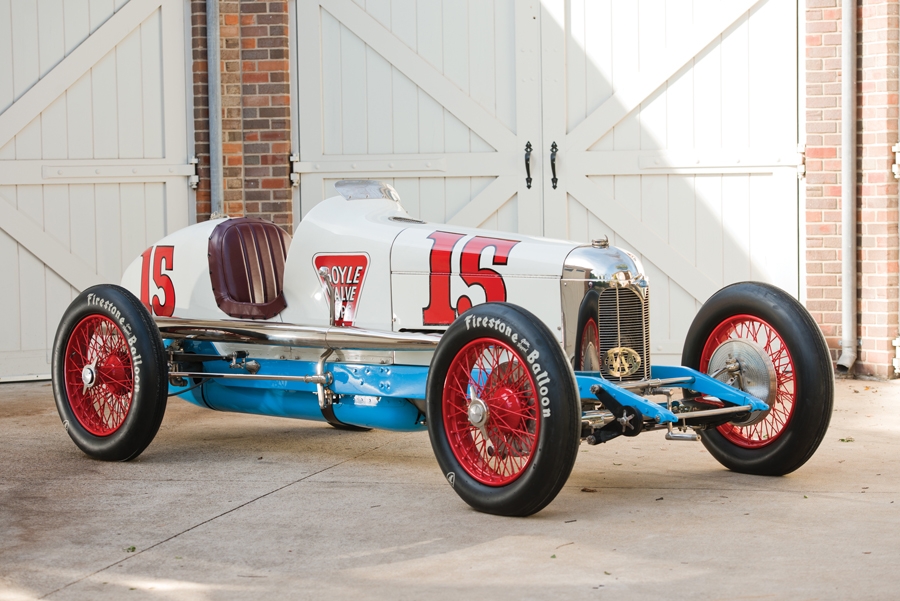Chassis Number: 5
The Miller 91 was a true tour de force of rear-wheel-drive racing technology. It was so successful and its domination on speedways of the 1920s was so complete that it was effectively responsible for its own demise. The AAA’s rule change for 1930 to the “Junk Formula” was, in fact, adopted to stop the Miller 91’s seemingly unstoppable winning streak.
When the rule change that limited displacement to 1½ liters (91 cubic inches) was announced for the 1926 racing season, Harry Miller could have merely shortened the stroke of his nearly unbeatable 122-cubic inch engine and continued producing and selling the rear-drive race car that he first introduced in 1923. Instead, in typical fashion, Miller’s staff of extraordinarily talented men was assigned to design and build an entirely new car.
All of the new 91-cubic-inch engines were supercharged, and at introduction, they developed 155 horsepower at 7,000 rpm. Extensive on-track development work resulted in refinements that eventually boosted output to well over 250 horsepower at 8,000 rpm.
The consigned car was repainted as the Boyle Valve Special when it wore #15. It started 6th on the grid at the 1927 Indianapolis 500 and finished a respectable 19th. The original Boyle Valve Special’s cosmetic livery was precisely copied on this car based on the drawings of famed automotive artist Peter Helck, with the triangular logo complementing a deep finish of white and light blue paintwork.

